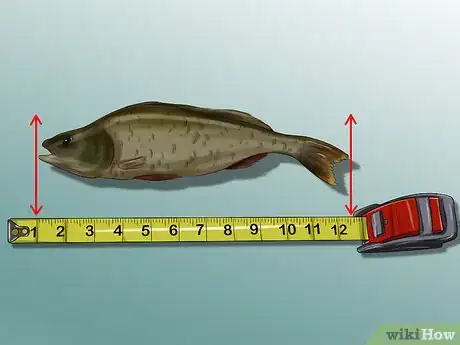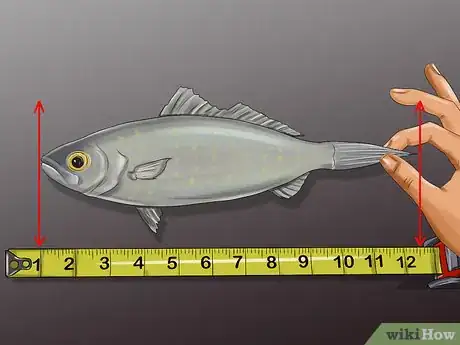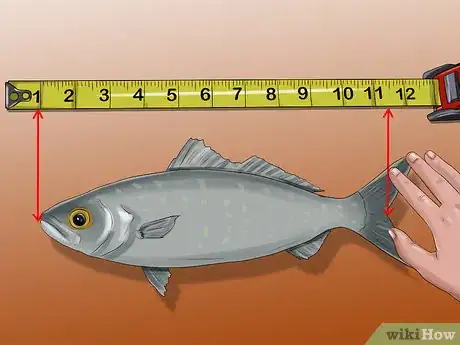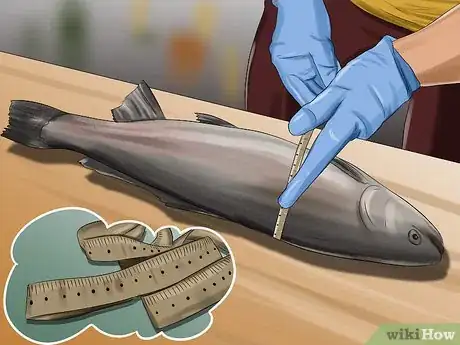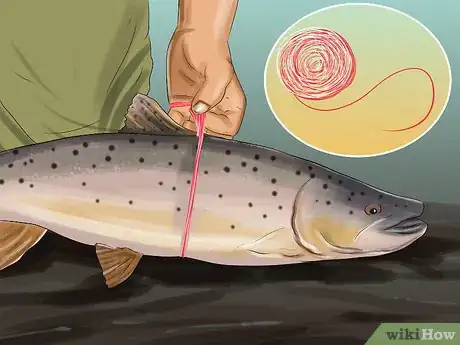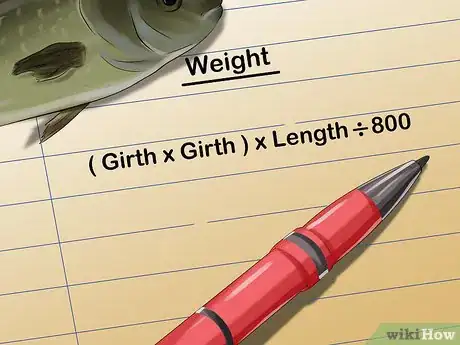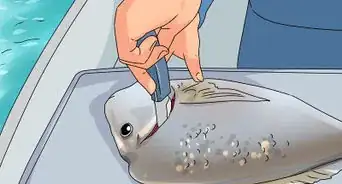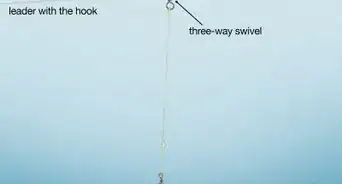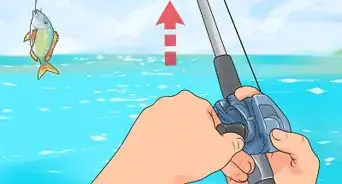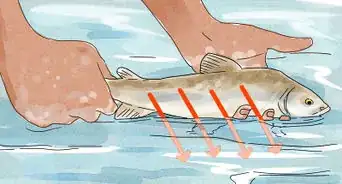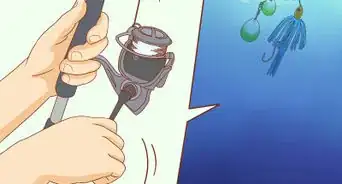This article was co-authored by wikiHow staff writer, Kyle Hall. Kyle Hall works on the content team at wikiHow. He helps manage our team of editors and creates content for a variety of wikiHow projects. Kyle continually looks for new ways to improve the content at wikiHow and make it more helpful and enjoyable for readers. He graduated from Eckerd College in 2015, where he majored in Political Science.
This article has been viewed 36,218 times.
Learn more...
Knowing how to measure a fish is convenient for keeping track of your best catches, and it may be necessary if you’re fishing somewhere with regulated fish-size limits. The easiest way to measure the length of a fish is using a tape measure. If you also want to measure the girth of a fish you catch, bring along a fabric ruler or a piece of string to make it easier for yourself. When you're measuring a live fish, make sure you firmly hold it in your hand so it doesn't flop back into the water.
Steps
Measuring the Length
-
1Lay an extended tape measure on a flat surface. Extend the tape measure so it’s visibly longer than the fish you’re measuring. Whenever you’re measuring the length of a fish, you want to lay a tape measure flat as opposed to running it over the top of the fish. Going over the top of the fish with the tape measure can distort the measurement.[1]
-
2Lay the fish flat next to the tape measure. Position the fish so the tip of its mouth is lined up with the end of the tape measure. Don't put the fish directly on top of the tape measure or you won't be able to read the measurement.[2]Advertisement
-
3Start your measurement at the tip of the fish’s mouth. There are 3 different ways you can measure a fish's length — total length, fork length, and standard length — but you should always start at the tip of the fish's mouth, regardless of the measurement you're taking. If the fish's bottom jaw extends out further than the top of the fish's mouth, measure starting at the furthest point on the bottom jaw.[3]
-
4Pinch the tail fin closed and measure to the tip to get the total length. The tail fin is the fin at the end of the fish’s body. Place your index finger on one tip of the tail fin and your thumb on the other. Then, squeeze the two tips together so they form a single point. The measurement from the tip of the fish’s mouth to the tip of the point between your fingers is the total length of the fish.[4]
-
5Measure to the point where the tail fin separates to get the fork length. Look at the tail fin on the fish you’re measuring. Place your finger on the spot where the tail fin branches off into 2 separate points. The measurement between that point and the tip of the fish’s mouth is the fork length.[5]
- Fishing size limits are often based on the fork length of a fish.
-
6Measure to the start of the tail fin to get the standard length. The start of the tail fin is the point where the fish’s fleshy body ends, and the thin tail fin begins. The distance between that point and the tip of the fish’s mouth is the standard length of the fish.[6]
- Scientists often use standard length when they're describing the characteristics of a fish.
Measuring the Girth and Weight
-
1Wrap a fabric ruler around the fattest part of the fish to find the girth. To find the fattest part, pick up the fish and hold it so you’re looking straight down at its back. Whichever part sticks out the most on both sides of the fish is the fattest part of the fish’s body. Measure that part to find the fish's girth.[7]
-
2Use a piece of string to measure the girth if you don’t have a fabric ruler. Wrap a piece of string around the fattest part of the fish. Note the spot where the end of the string touches the rest of the string when it’s wrapped around the fish. Then, unwrap the string and lay it next to a tape measure. Measure the distance between the end of the string and the spot you noted before. The measurement you get is the girth of the fish.[8]
-
3Calculate the fish's weight once you have the length and girth. To get an estimate of the fish's weight, input the measurements you got for length and girth into the formula: (girth x girth) x length / 800 = weight.[9]
- For example, if the fish is 24 inches (61 cm) long and it has a girth of 10 inches (25 cm), the formula would look like: (10 x 10) x 24 / 800 = 3. The fish's weight in this case would be about 3 pounds (1.4 kg).
Things You’ll Need
- Tape measure
- Fabric ruler
- String
References
- ↑ https://www.youtube.com/watch?v=2Va-ANxdQhM&feature=youtu.be&t=21
- ↑ https://www.youtube.com/watch?v=2Va-ANxdQhM&feature=youtu.be&t=26
- ↑ http://myfwc.com/fishing/freshwater/fishing-tips/measure/
- ↑ http://myfwc.com/fishing/freshwater/fishing-tips/measure/
- ↑ http://dlnr.hawaii.gov/dar/fishing/fishing-regulations/how-to-measure-fish-and-invertebrates/
- ↑ http://myfwc.com/fishing/freshwater/fishing-tips/measure/
- ↑ http://myfwc.com/fishing/freshwater/fishing-tips/measure/
- ↑ http://myfwc.com/fishing/freshwater/fishing-tips/measure/
- ↑ http://saltwaterfishing.sc.gov/weight.html

